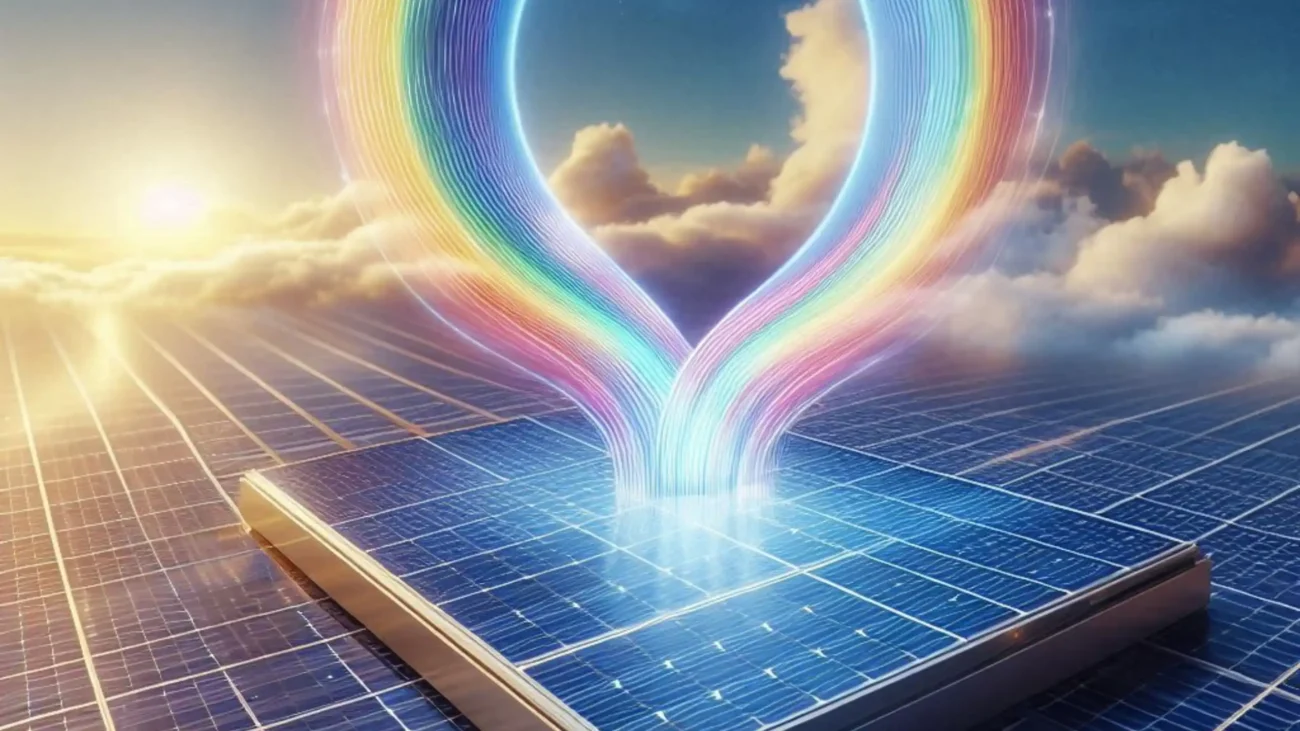In today’s world, solar energy is increasingly becoming a cornerstone of sustainable energy solutions. As the global demand for clean and renewable energy sources surges, the efficiency of solar panels has become a pivotal factor in the advancement of solar technology. In this comprehensive article, we delve into the highest solar panel efficiency, the technologies driving these advancements, and the future outlook of solar energy. Solar Gadget
In This Post
Understanding Solar Panel Efficiency
Solar panel efficiency refers to the percentage of sunlight that can be converted into usable electricity by a solar panel. The higher the efficiency, the more electricity a panel can produce from a given amount of sunlight. This is crucial for maximizing energy output, especially in areas with limited space for installing solar panels.
Factors Influencing Solar Panel Efficiency
Several factors affect the efficiency of solar panels, including:
- Material Quality: High-purity silicon and other advanced materials enhance efficiency.
- Manufacturing Techniques: Precision in production processes reduces defects and improves performance.
- Design Innovations: Improved cell structures and layouts optimize light absorption and energy conversion.
- Temperature: Cooler temperatures generally enhance efficiency as high heat can reduce performance.
- Installation Angle and Position: Proper alignment with the sun’s trajectory maximizes exposure and efficiency.

Current Leaders in Solar Panel Efficiency
Monocrystalline Silicon Panels
Monocrystalline silicon panels are known for their high efficiency and longevity. These panels are made from single-crystal silicon, which provides a uniform structure that enhances electron movement. SunPower is a notable leader in this category, with its Maxeon 3 panels boasting efficiencies up to 22.8%. Solar Gadget Reviews
Polycrystalline Silicon Panels
Thin-Film Solar Panels
Thin-film solar panels are a versatile and lightweight option, though they typically have lower efficiencies compared to crystalline silicon panels. However, advancements in materials such as cadmium telluride (CdTe) and copper indium gallium selenide (CIGS) are pushing efficiencies higher. First Solar‘s Series 6 CdTe panels, for instance, reach efficiencies of around 18.2%. Blog
Emerging Technologies
Perovskite Solar Cells
Perovskite solar cells are gaining attention for their potential to surpass traditional silicon-based technologies. These cells are made from a unique crystal structure that offers high light absorption and energy conversion efficiency. Current laboratory prototypes have reached efficiencies of over 25%, and ongoing research aims to bring this technology to commercial viability.
Multi-Junction Solar Cells
Multi-junction solar cells combine multiple layers of different semiconductor materials to capture a broader spectrum of sunlight. These cells have achieved record efficiencies in laboratory settings, with some surpassing 40%. Companies like Alta Devices are pioneering this technology, aiming to bring these high-efficiency cells to the market.

Innovative Design and Manufacturing Techniques
Passivated Emitter Rear Cell (PERC) Technology
PERC technology enhances the efficiency of solar cells by adding a reflective layer on the rear side of the cell, which reflects unabsorbed light back into the cell for a second chance at energy conversion. This technology has pushed efficiencies beyond 23% in commercial applications.
Heterojunction Technology (HJT)
HJT combines crystalline silicon with thin layers of amorphous silicon to improve light absorption and electron mobility. This hybrid approach results in higher efficiencies and better performance at higher temperatures. Companies like Panasonic have developed HJT panels with efficiencies up to 22.6%. Solar Guides
The Future of Solar Panel Efficiency
The future of solar panel efficiency looks promising with continuous research and development. Emerging technologies such as quantum dot solar cells and organic photovoltaic cells hold the potential to revolutionize the industry with even higher efficiencies and lower production costs. Moreover, integrating solar panels into building materials and other innovative applications will expand the use of solar energy in new and exciting ways.
Quantum Dot Solar Cells
Quantum dots are semiconductor nanoparticles that can be tuned to absorb different wavelengths of light. This property allows for the creation of solar cells that can capture more of the solar spectrum. Current research is focused on improving the stability and efficiency of quantum dot solar cells, with laboratory efficiencies reaching around 16%. Gadget For Travelers
Organic Photovoltaic Cells
Organic photovoltaic (OPV) cells use organic molecules or polymers to capture sunlight. These cells are lightweight, flexible, and can be produced using low-cost printing techniques. Although their current efficiencies are lower, around 11%, ongoing advancements in materials science are expected to boost their performance significantly.

Conclusion
Solar panel efficiency is a dynamic and rapidly evolving field. From traditional silicon-based technologies to cutting-edge materials and designs, the quest for higher efficiency is driving significant advancements in solar energy. As we continue to innovate and improve, solar panels will play an increasingly vital role in meeting global energy demands sustainably.
FAQs on Solar Panel Efficiency
What is solar panel efficiency?
Solar panel efficiency measures the percentage of sunlight a panel converts into usable electricity. Higher efficiency panels produce more power from the same sunlight. Factors influencing efficiency include material quality, manufacturing techniques, design innovations, temperature, and installation angle. Monocrystalline panels currently lead in efficiency, with emerging technologies promising further improvements.
Why is solar panel efficiency important?
Solar panel efficiency is important because it determines how much electricity a panel can generate from sunlight. Higher efficiency panels maximize energy production in limited spaces, reduce the overall cost per watt, and enhance the viability of solar energy in various applications, making solar power a more effective and sustainable energy source.
What are the most efficient solar panels currently available?
The most efficient solar panels currently available are monocrystalline silicon panels, with SunPower’s Maxeon 3 panels achieving up to 22.8% efficiency. Emerging technologies like perovskite solar cells have reached over 25% efficiency in laboratory settings, promising further advancements in commercial solar panel efficiency.
What factors affect the efficiency of a solar panel?
Factors affecting solar panel efficiency include:
Material quality: Higher purity materials improve performance.
Manufacturing techniques: Precision reduces defects.
Design innovations: Advanced cell structures enhance light absorption.
Temperature: Cooler temperatures generally boost efficiency.
Installation angle and position: Proper alignment maximizes sunlight exposure.
How does temperature affect solar panel efficiency?
Temperature affects solar panel efficiency by reducing performance as temperatures rise. Most panels are rated at 25°C (77°F); when temperatures exceed this, efficiency typically decreases due to increased resistance in the solar cells. Cooler temperatures generally enhance efficiency, making panels more effective in converting sunlight to electricity.
Are there new technologies that could improve solar panel efficiency?
Yes, new technologies improving solar panel efficiency include perovskite solar cells, multi-junction solar cells, quantum dot solar cells, and organic photovoltaic cells. These advancements promise higher efficiencies and lower production costs, pushing the boundaries of current solar technology.
What is PERC technology?
PERC technology (Passivated Emitter Rear Cell) enhances solar panel efficiency by adding a passivation layer on the rear side of the cell. This reflective layer re-captures unabsorbed light, improving light absorption and energy conversion, resulting in higher overall efficiency compared to conventional solar cells.
How do multi-junction solar cells work?
Multi-junction solar cells work by stacking multiple layers of different semiconductor materials, each designed to absorb different parts of the solar spectrum. This structure allows the cells to capture a broader range of sunlight, significantly increasing overall efficiency compared to single-junction cells. Each layer optimizes the conversion of specific wavelengths of light into electricity.
Are thin-film solar panels efficient?
Thin-film solar panels are generally less efficient than crystalline silicon panels but offer advantages such as flexibility, lightweight construction, and lower production costs. Advances in materials like cadmium telluride (CdTe) and copper indium gallium selenide (CIGS) have improved their efficiencies, with some reaching up to 18.2%. While they are less efficient, their versatility makes them suitable for various applications.
Can solar panel efficiency improve in the future?
Yes, solar panel efficiency can improve in the future. Ongoing research in perovskite solar cells, multi-junction solar cells, quantum dot solar cells, and organic photovoltaic cells is driving advancements. These technologies promise higher efficiencies, lower production costs, and innovative applications, ensuring continuous improvement in solar panel performance.
